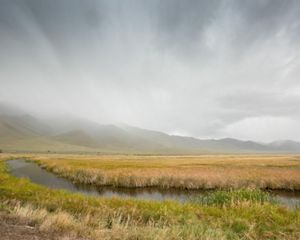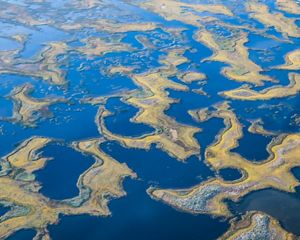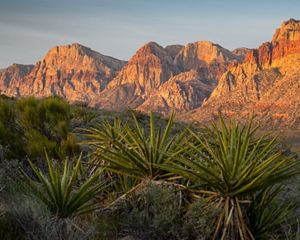New study reveals alarming groundwater declines threatening Nevada’s ecosystems

Media Contacts
-
Lena Rueck
Media Relations
Phone: 801-822-7990
Email: lena.rueck@tnc.org
Groundwater in Nevada is under growing threat, with nearly 40% of thousands of wells analyzed across the state showing significantly declining water levels, according to a scientific paper recently published in the Hydrological Processes. The study warns of mounting risks to groundwater-dependent ecosystems (GDEs) like springs, wetlands and riparian habitats that sustain rare plants and wildlife, but also offers science-based strategies to protect and restore these vital systems amid intensifying drought and rising water demand.
Groundwater is the largest source of freshwater on Earth and is increasingly vital for both human and ecological needs, especially in arid regions like Nevada, where surface water is scarce.
“Our research shows that groundwater-dependent ecosystems in Nevada are already facing multiple, compounding stressors like excessive groundwater withdrawals and climate,” said Laurel Saito, Water Strategy Director for The Nature Conservancy in Nevada and lead author of the study. “This highlights the urgency of advancing science-based solutions to protect these ecosystems.”
“Based on our findings of more frequent and intense droughts projected across the state in the coming years, we expect threats to groundwater-dependent ecosystems to intensify, putting even greater pressure on these vulnerable ecosystems,” said Dan McEvoy, co-author of the study and researcher at the Desert Research Institute.
“Groundwater plays a critical role in supporting habitats, biodiversity, and climate regulation, yet it’s rarely managed with environmental needs in mind,” said Melissa M. Rohde, PhD, Principal at Rohde Environmental Consulting, LLC, and a co-author of the paper. “Without stronger policies and collaborative management, natural areas that rely on groundwater risk drying and degrading.”
To address these challenges, the paper offers the following strategies, not only for Nevada, but for arid regions worldwide facing similar pressures:
1. Increase understanding of co-benefits of healthy and restored GDEs.
2. Increase monitoring and reporting over space and time.
3. Enact policies to reduce current excessive groundwater withdrawals and over- appropriation to protect GDEs.
4. Enact policies to prevent future groundwater withdrawals that would negatively affect GDEs.
5. Include requirements for maintaining or protecting GDEs in regulations, codes, and laws for land and water management and economic development.
6. Include consideration of GDEs in permitting, guidance, and large-scale planning documents to identify and prioritize areas for protection and management of GDEs
7. Increase the pace and scale of restoration of GDEs in time and space
8. Incorporate collaboration, including public-private partnerships, to manage and sustain GDEs.
9. Increase awareness of the value of GDEs and the need to protect and reduce impacts to them.
10. Increase communication among water users, administrators, managers, and academics about GDEs.
For more information, visit our link here.
The Nature Conservancy is a global conservation organization dedicated to conserving the lands and waters on which all life depends. Guided by science, we create innovative, on-the-ground solutions to our world’s toughest challenges so that nature and people can thrive together. We are tackling climate change, conserving lands, waters and oceans at an unprecedented scale, providing food and water sustainably and helping make cities more resilient. The Nature Conservancy is working to make a lasting difference around the world in 83 countries and territories (39 by direct conservation impact and 44 through partners) through a collaborative approach that engages local communities, governments, the private sector, and other partners. To learn more, visit nature.org or follow @nature_press on X.


